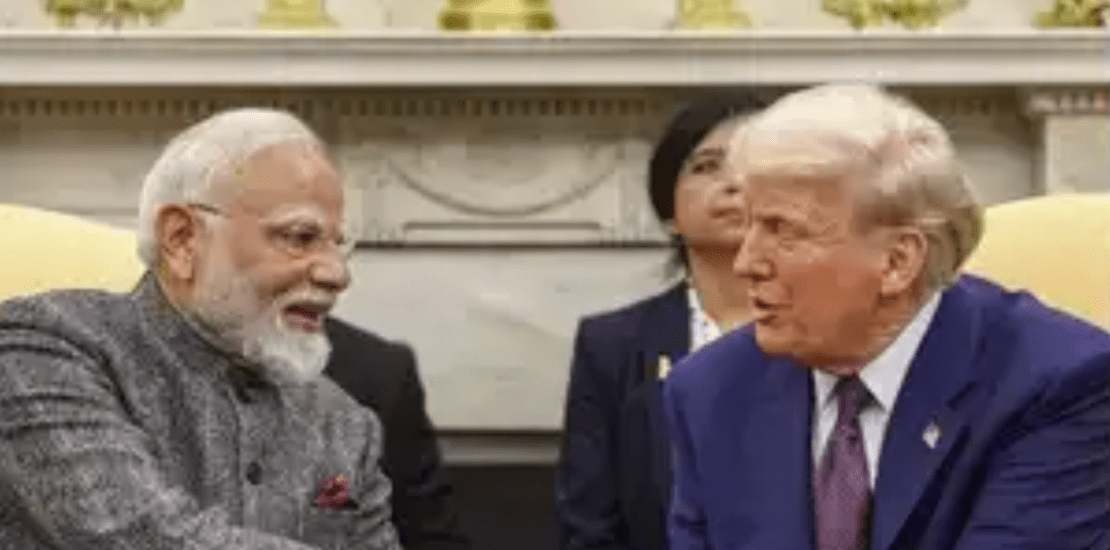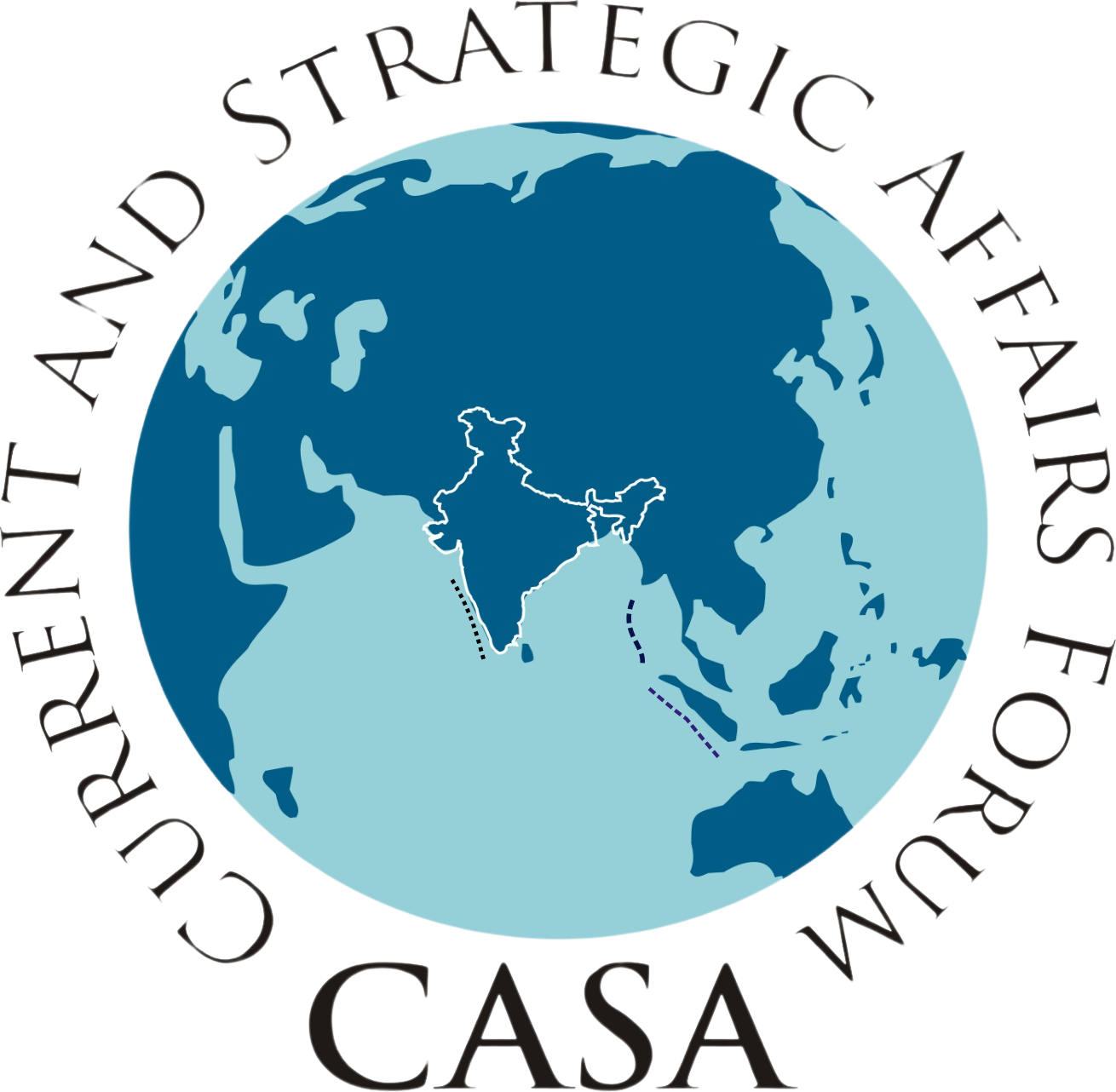Trump’s trap or chance at defence modernisation?
- March 27, 2025
- Posted by: admin
- Categories: India, US

PM Modi returned after fairly satisfactory parleys with President Trump earlier this month. There is considerable hype about Trump’s eulogies on our PM’s negotiating skills, but it will be prudent to remain cautious, for behind ‘taareef’ (praise), lurks tariff.Modi’s US visit covered a wide range of subjects and rolled out ambitious programmes, like Catalysing Opportunities for Military Partnership, Accelerated Commerce and Technology (Compact) and Transforming Relationships Utilising Strategic Technology (Trust). In many ways, it could well be repackaging of erstwhile programmes, like Biden’s iCET (Initiative on Critical and Emerging Technology) and the earlier Defence Trade and Technology Initiative (DTTI) during Trump 1.0.The bottom line is to build trust rather than new acronyms.Here, we need to apply the Chinese word for crisis, weichi, which combines wei (danger) and chi (opportunity). In the board game with the same name, it is all about creating strategic opportunities. Our challenge is to sidestep the traps and seek avenues for capability building and smart Atmanirbharata through technology transfer.Fundamental rules: Tech partnershipsFirst, self-reliance is a long, tedious process. It can be aided by genuine technology partnerships, coupled with achieving technology threshold in critical areas.Second, an incremental and collaborative approach is the way forward. Brahmos, joint project with Russia, is currently only 76% indigenous and likely to reach 85%; hence, at times, it is smart to be the lead integrator and not be focused on 100% indigenous content.Third, in certain niche areas, disruptive weapons like Bayraktar drones have given Turkey significant leverages.Fourth, developing disruptive technologies, like Elon Musk’s Starlink, can redress technology asymmetry as evidenced in the Ukrainian conflict.Fifth, technology transfers preclude core and critical source codes. Hence, in transfer of technology (ToT), it is largely ‘print or produce to design’ at best, passing off ‘know-how’ but most rarely ‘know-why’.Sixth, reverse engineering is abundantly used, notably by China and Iran, to clone crude versions of advanced weapons. The most important rule is that there are no free lunches.Challenges and opportunitiesAs per the US Congressional report drawing on reputed sources like Stockholm Peace Research Institute (SIPRI), India is the largest importer of armaments in terms of value, accounting for approximately 10% of global imports from 2008 to 2023. In value terms, Russian-origin equipment accounts for 62%, declining from 76%. Other top suppliers are France (11%), USA (10%) and Israel (7%).Our biggest challenge is the inability of DRDO and DPSUs to realise planned deadlines. Tejas and MBT Arjuna being striking examples.Failure of Kaveri programme for aero-engines translated to reliance on US F-404/414 engines. Similarly, delay in supply of Ukrainian marine gas-turbines have caused significant delays and raised questions on hype of indigenous naval platforms.In case of tank power-packs, German MTU failed to supply 800HP engines for Zorawar, forcing switch to American 760HP Cummins. Even the Shakti engine for helicopters is a collaborative effort with Safran.A national engine mission/challenge is long overdue.India deploys the largest fleet of T-90 tanks, even larger than Russia. We also have the largest operational inventory of C-17 Globemaster and P8I Poseidon aircrafts outside the US.The sheer size of Indian inventories provide an opportunity as no major arms producer wants to be left out in this lucrative market. It also is the most appropriate global/regional hub for maintenance repairs and overhaul (MRO) and warehousing.USSR and othersIndian experience with the Soviet Union has been mixed. Equipment is robust and relatively economical, but a notch below cutting edge. It follows an evolutionary model and customisation has been possible. Russia has been benign in early years, accepting rupees and even commodity (banana) payment. They have also leased strategic platforms like Chakra submarines enabling the Arihant series. Notwithstanding, the foregoing, many ToTs have really meant licensed production with even annual capping on numbers and spare parts supply has been unreliable.Sourcing from France and Israel has enabled induction of hi-tech weapons and customisation with offsets to local manufacturers.US salesThe US follows a govt-to-govt route for foreign military sales (FMS). American equipment is cutting edge, with reliable support but expensive. Only limited trials are allowed, offsets are difficult and possible only in peripherals.Source codes are not shared, obviating customisation and has strict end-user restrictions. The US also has the Countering American Adversaries Through Sanctions Act (CAATSA). India managed a rare waiver for S400 AD systems from Russia.The recent announcements include the possibility of India buying Strykers, wheeled combat vehicles and Javelin missiles. Stryker and Javelin missiles have a two-decade-old technology. They were offered to India during Yudh-Abhyas exercises in 2006.Reportedly, during recent trials, there were issues with the engine, which the US has agreed to replace. It is surprising that Strykers are being pushed, when a vibrant ecosystem by TATAs, Mahindra and L&T for protected platforms is operational, with TATAs even setting up a plant in Morocco.India has already acquired more economical Spike missiles from Israel, and the indigenous NAG system is becoming operational.Enough has been articulated about spanner in the works type of offer of F-35 and its comparison with Su-57. The delay in supply of F404 engines for Tejas and six Apache attack helicopters could well be part of some arm-twisting for Strykers, Javelin and even F-35.If forced, the F-35 can at best be bought in limited numbers, two odd squadrons and will have to be operated largely as standalone platforms. Our focus should be to ensure continued F404/414 supplies for keeping the Tejas programme on track. We should realistically review our 42-squadron target and bolster air power with drones and surveillance.This will require flexibility, commitment and astute tech diplomacy.(Writer is former GOC-in-C, Western Command, Indian Army)
